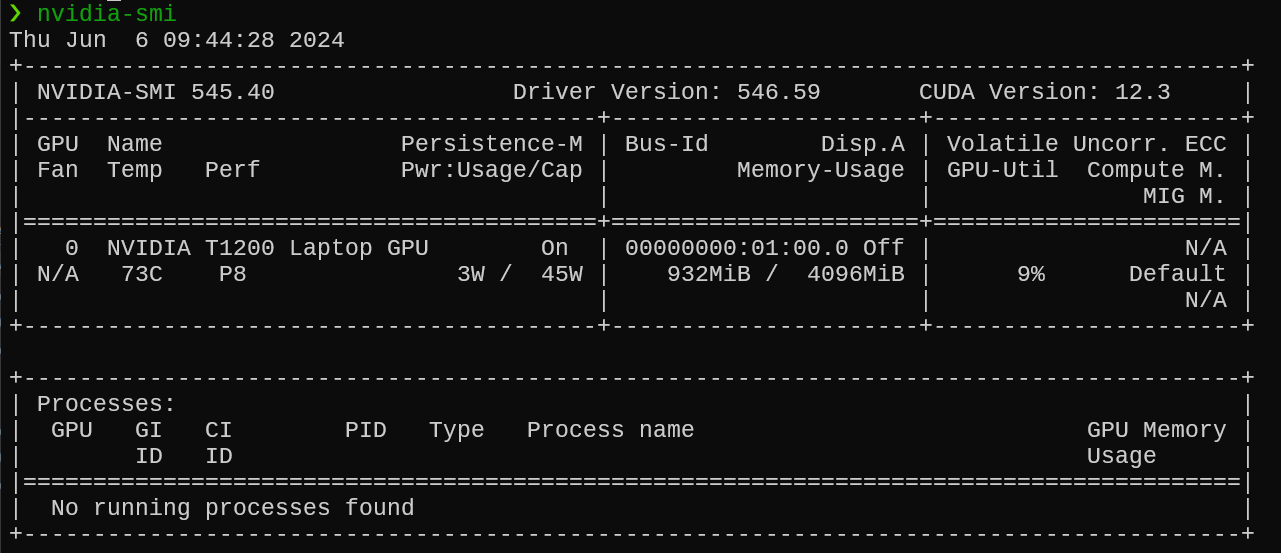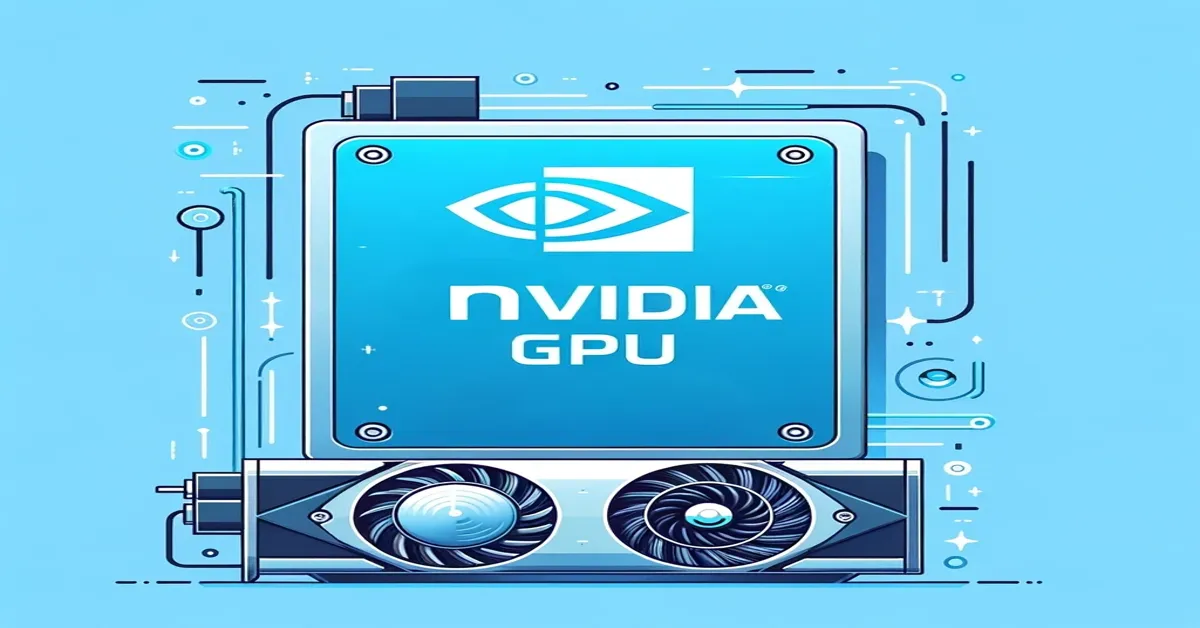With the increasing complexity of machine learning models and the volume of data, leveraging GPU acceleration for training and inference has become essential. I have a Dell laptop with the NVIDIA T1200 Laptop GPU chip. I recently had to setup my laptop to use tensorflow on wsl2 and went through the setup process. The setup process was not straight forward and I ran into a bunch of issues and the documentation did not make it easy. This guide provides a detailed, step-by-step approach that worked for me to set up the NVIDIA GPU for TensorFlow on Windows Subsystem for Linux 2 (WSL2). By the end of this guide, you will have a working environment that uses your GPU to accelerate TensorFlow tasks.
Step 1: Install WSL2 and Set Up a Linux Distribution
Windows Subsystem for Linux (WSL) allows you to run a Linux environment directly on Windows, unmodified, without the overhead of a virtual machine. WSL2 improves performance and provides a full Linux kernel.
Enable WSL2 on Windows 10/11
- Open PowerShell as Administrator and run the following command:
wsl --install
- Restart your computer if prompted.
Install a Linux Distribution
- From the Microsoft Store, install a Linux distribution such as Ubuntu. I already had Ubuntu 22.04 installed and setup.
- Launch the installed distribution and complete the setup.
Step 2: Update and Upgrade Packages
Once you have your Linux distribution set up, it is essential to update your package list and upgrade all packages to ensure you have the latest software.
sudo apt update
sudo apt upgrade -y
Step 3: Install NVIDIA Drivers
To enable GPU support, ensure you have the latest NVIDIA drivers installed on your Windows system. Download and install the drivers from the NVIDIA website .
Step 4: Install CUDA Toolkit
CUDA is a parallel computing platform and application programming interface (API) model created by NVIDIA. Installing the CUDA Toolkit enables GPU acceleration for TensorFlow.
Add NVIDIA’s Package Repository
Add the CUDA repository to your system and install the CUDA Toolkit:
Download and move the repository pin:
wget https://developer.download.nvidia.com/compute/cuda/repos/ubuntu2004/x86_64/cuda-ubuntu2004.pin sudo mv cuda-ubuntu2004.pin /etc/apt/preferences.d/cuda-repository-pin-600Download and install the local repository package:
wget https://developer.download.nvidia.com/compute/cuda/11.4.1/local_installers/cuda-repo-ubuntu2004-11-4-local_11.4.1-470.57.02-1_amd64.deb sudo dpkg -i cuda-repo-ubuntu2004-11-4-local_11.4.1-470.57.02-1_amd64.deb sudo apt-key add /var/cuda-repo-ubuntu2004-11-4-local/7fa2af80.pub sudo apt-get update
Install CUDA Toolkit
- Install the CUDA Toolkit using the following command:
sudo apt-get -y install cuda
- Validate that it all works by using
nvidia-smicommand

Step 5: Install cuDNN
cuDNN is a GPU-accelerated library for deep neural networks. It is required for TensorFlow to leverage the GPU for model training and inference.
Download cuDNN
Visit the NVIDIA cuDNN page and download the cuDNN tar file for your CUDA version.
Install cuDNN
Extract the downloaded file and copy the contents to the CUDA installation directory:
tar -xzvf cudnn-11.4-linux-x64-v8.2.4.15.tgz
sudo cp cuda/include/cudnn*.h /usr/local/cuda/include
sudo cp cuda/lib64/libcudnn* /usr/local/cuda/lib64
sudo chmod a+r /usr/local/cuda/include/cudnn*.h /usr/local/cuda/lib64/libcudnn*
Step 6: Set Environment Variables
To make CUDA and cuDNN available to TensorFlow, add their paths to your environment variables.
echo 'export PATH=/usr/local/cuda/bin:$PATH' >> ~/.bashrc
echo 'export LD_LIBRARY_PATH=/usr/local/cuda/lib64:$LD_LIBRARY_PATH' >> ~/.bashrc
source ~/.bashrc
Step 7: Verify Installation
Verify the installation of CUDA and cuDNN to ensure everything is set up correctly.
Check CUDA Installation
nvcc --version
This is my output

Verify TensorFlow GPU Access
Create a simple Python script to verify that TensorFlow can access the GPU:
import tensorflow as tf
print("Num GPUs Available: ", len(tf.config.list_physical_devices('GPU')))
Expected Output
You should see output confirming the availability of GPUs. For example:
Num GPUs Available: 1
Step 8: Install TensorFlow with GPU Support
Finally, ensure that TensorFlow is installed with GPU support.
pip install tensorflow
Step 9: Verify TensorFlow install and access to GPU
You can use the below code the quickly check and ensure that TensorFlow is installed successfully and is able to use the GPU
import tensorflow as tf
print("TensorFlow Version:", tf.__version__)
# List available devices
print("Available devices:")
for device in tf.config.list_physical_devices():
print(device)
# Check for GPU
gpus = tf.config.list_physical_devices('GPU')
if gpus:
print("GPU is available: ", gpus)
else:
print("No GPU found")
from tensorflow.python.client import device_lib
print(device_lib.list_local_devices())
Summary of Steps
- Enable WSL2 and install a Linux distribution (e.g., Ubuntu).
- Update and upgrade packages in the Linux distribution.
- Install NVIDIA drivers on Windows.
- Add NVIDIA’s package repository and install the CUDA toolkit.
- Download and install cuDNN, copying the necessary files to the CUDA directory.
- Set environment variables for CUDA and cuDNN.
- Verify the installation of CUDA and cuDNN.
- Install TensorFlow with GPU support.
- Verify TensorFlow install and access to GPU.
This quick guide hopefully helps ensure that your environment is ready for GPU-accelerated machine learning with TensorFlow on WSL2. Leveraging the power of GPU can significantly speed up your training and inference processes, allowing you to work with more complex models and larger datasets.
Feel free to reach out if you encounter any issues or need further assistance!
